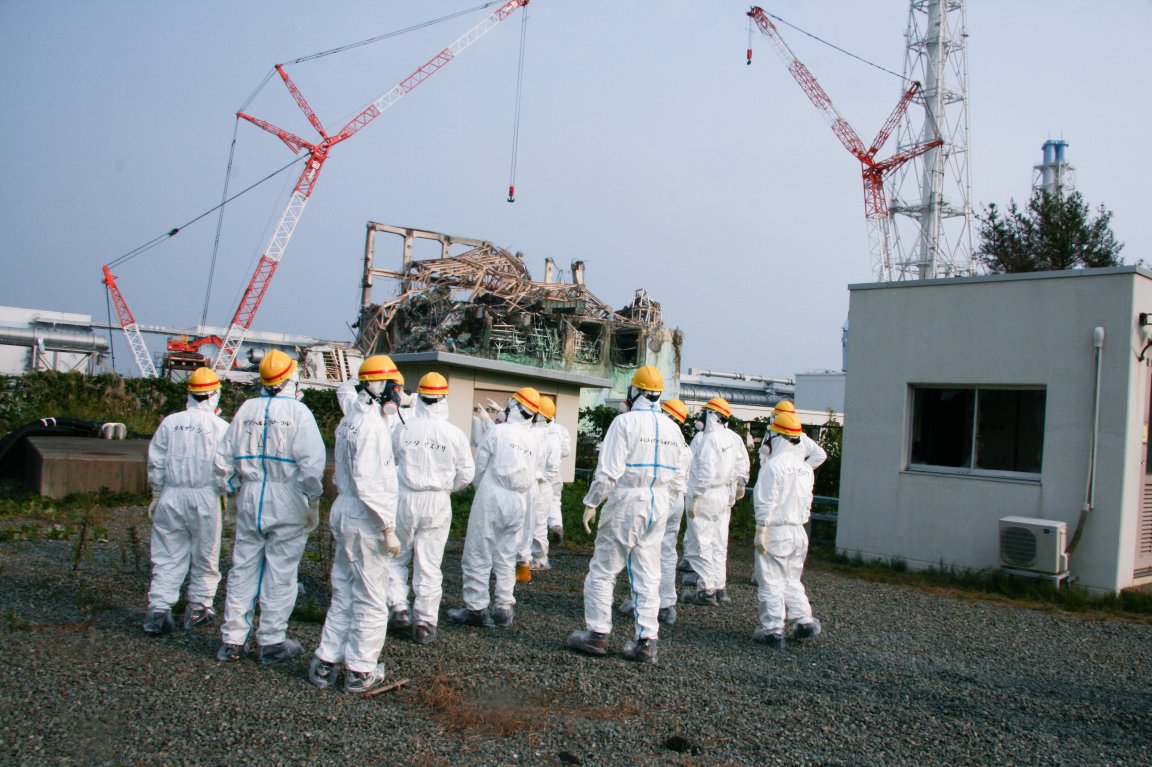
Mini-Manbo
On March 11, 2011, the tsunami caused by the Tōhoku earthquake prompted a nuclear disaster at the Fukushima Daiichi Nuclear Power Plant in Ōkuma, Fukushima. Now, for the first time, a crew has been able to capture images of melted uranium fuel present in its ruined Unit 3 reactor.
The accident caused three of the facility’s six nuclear reactors to melt down. When this occurred, their uranium fuel rods liquefied, melting through layers of steel and concrete. This made it difficult for those investigating the accident after the fact to determine where the uranium had ended up.

The rods were cooled when plant workers pumped water into the reactor buildings, but there was no way to know how far they had traveled. It took three days for four engineers to pilot a small drone known as the Mini-Manbo through the corridors of flooded buildings to find the uranium. Previous attempts to use robots for this purpose had not been successful, but the new model was built from materials that are resistant to radiation and equipped with a sensor that allowed it to avoid particularly perilous areas.
This breakthrough is being touted as a turning point for the Japanese government’s efforts to respond to the disaster. As the clean-up process begins in earnest, many are taking it as a sign that the crisis has finally come to an end.
“Until now, we didn’t know exactly where the fuel was, or what it looked like,” said Takahiro Kimoto, a general manager at the company that operated the plant’s nuclear power arm, according to a report from the New York Times. “Now that we have seen it, we can make plans to retrieve it.”
Cleaning Up
Around 7,000 people have been at work on the site of the nuclear plant constructing new water storage tanks, helping to dispose of the radioactive debris and building scaffoldings over the badly damaged reactor buildings.
The level of protection needed to work on-site is gradually being scaled back. A year ago, special clothing was required in all areas. Now street clothes are permitted everywhere except for the parts of the facility that remain heavily radioactive.
The next step will be initiating the removal the melted uranium fuel from one of the reactors, which is expected to get underway in 2021. That said, authorities have not yet selected which reactor will be addressed first. It’s expected to take between 30 and 40 years to finish cleaning up the plant, and the project will cost tens of billions of dollars.
Despite the enormous consequences of the Fukushima disaster, it’s important to recognize that nuclear energy isn’t inherently dangerous. There are safe ways to use nuclear reactors to generate power. It’s an important consideration, as there are well-documented drawbacks to using forms of energy that have become more widely accepted and normalized than nuclear power.